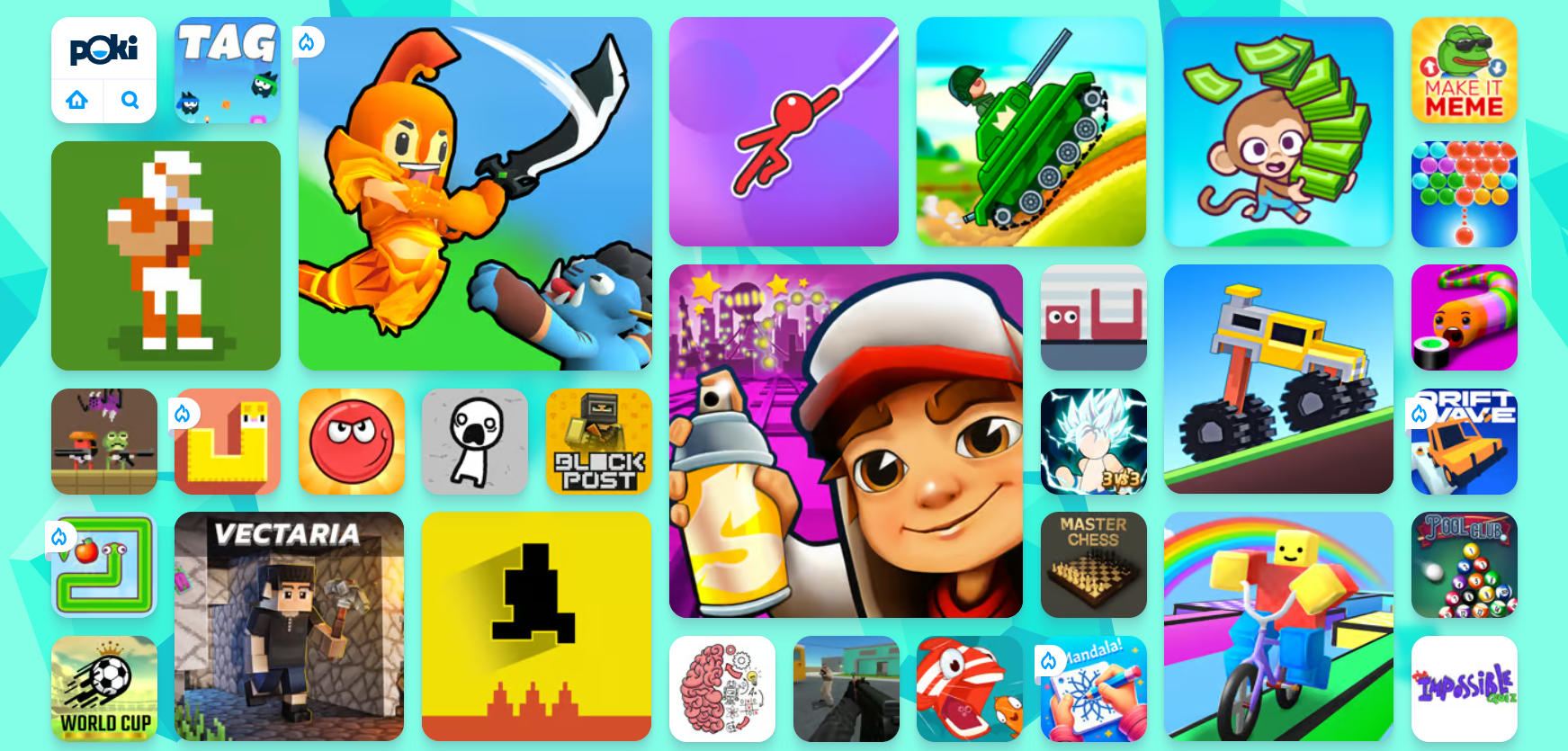Casual
Encouraging Growth and Motivation: Resources for Child Development

Child development is a complex journey marked by critical milestones where each stride forward builds upon the foundation of the previous one. Acknowledging children’s individual needs, pediatric therapy services tailor strategies to foster physical, emotional, and cognitive growth. To support this transformative process, environments that prompt curiosity and engagement, coupled with advanced educational tools, play an instrumental role in shaping young minds. These resources, carefully selected and applied, can significantly amplify a child’s developmental trajectory. Keep reading to learn about the effective ways these tools and techniques can aid in advancing childhood milestones.
Pediatric Therapy Services: Enhancing Developmental Milestones
Pediatric therapy services support children as they reach and surpass developmental milestones. These services, often provided by skilled therapists, address various growth challenges, ensuring each child has the best possible start in life. From speech and occupational therapy to physical and behavioral interventions, these professionals tailor their approach to meet the unique needs of every young patient.
Therapists work relentlessly to motivate children, fostering an environment where milestones are not merely achieved but celebrated. Through personalized, one-on-one sessions, children gain the confidence and skills necessary to navigate their developmental journeys more easily. The trust between therapist and child is a solid foundation for consistent progress and paves the path for lifelong learning and adaptation.
Resource provision is a key component of pediatric therapy, equipping parents with the tools to continue therapy practices at home. Effective communication between therapists and families ensures a cohesive strategy that envelops the child’s daily routine, enhancing the therapy’s impact. It also allows parents to identify subtle progress, reinforcing their pivotal role in the child’s developmental success.
If you’re looking for pediatric therapy in your area, a simple Google search like “pediatric therapy Arizona” will help you find local providers and services tailored to your child’s needs, ensuring they receive the specialized care necessary for their development.
Optimizing Play Spaces: Creating Environments for Learning and Exploration
Optimized play spaces are vital platforms where children engage with their world, build skills, and unleash their creativity. Designers of such areas pay astute attention to elements that promote safe exploration and intellectual stimulation. A thoughtfully arranged play environment serves as a place of entertainment and a crucible for burgeoning development.
Professionals incorporate a variety of tactile and visual stimuli within play areas to cater to diverse developmental needs and interests. Stimulating sensory experiences is central to cognitive and motor skill refinement among younger populations. The intentional selection of colors, textures, and interactive features sparks curiosity and encourages physical activity, which is fundamental to healthy growth.
Accessibility remains paramount in creating play spaces, ensuring they cater to children across all abilities. Including adaptive resources within these environments demonstrates a commitment to inclusive development, allowing every child to participate and benefit from the joy and learning play offers. Such inclusiveness fosters a sense of community and belonging, which is essential for emotional and social development.
Affording children autonomy in their play advances self-directed learning and problem-solving capabilities. When children feel empowered to make choices within their play, they better understand their preferences and abilities, setting the stage for confidence and self-awareness — qualities that are instrumental as children grow and transition through life’s stages.
Additionally, incorporating elements like fake plants or outdoor plants from retailers like Nearly Natural outdoor plants into play spaces can enhance children’s sensory and aesthetic experience.
Interactive Learning Tools: Technology and Resources for Cognitive Development
Interactive learning tools harness technology’s power to solidify children’s cognitive development. These digital resources provide an array of engaging, educational content that aligns with critical thinking and problem-solving skills.
Software and applications designed for children’s learning capitalize on the allure of multimedia to capture young minds. Effective education solutions provide children with stimulating challenges that are age-appropriate and aligned with developmental targets.
The discerning use of educational technology in classrooms and homes can reinforce concepts and skills taught through traditional methods. It creates a harmonious blend of instruction and interactive play, thereby cementing a child’s understanding and retention of information.
Providers of such educational platforms are ever vigilant, updating content to reflect new educational strategies and the latest academic research. Thus, children equipped with these technological tools remain at the vanguard of current learning methodologies, all while engrossed in fun and dynamic ways.
Overall, caregivers and educators can provide comprehensive support for children’s developmental journeys by integrating pediatric therapy services, optimized play spaces, and interactive learning tools. These resources nurture their physical, emotional, and cognitive growth and cultivate a lifelong love for learning and exploration.
Casual
Master the UNO Game Rules: Easy Guide for All Players

If you have some free time to spare, UNO is one of those games that always comes in clutch. It is fun and engaging; you can play it in a large group, further adding to the fun.
One thing about UNO is that many people must be aware of the rules or remain confused. “Should you draw four after drawing two?” “What are the rules of skip and rewind?” These are common questions about the UNO Game that many often get confused about.
In this comprehensive guide, we will examine the rules of UNO and how to follow them for a fruitful game.
What are the Components of the UNO Deck?
Before we discuss the rules, let’s clarify the basics. There are different types of UNO cards, each with a particular significance.
A standard UNO deck consists of 108 cards, which can be categorised into three main sections:

Number cards: Each of the four colors (Red, Yellow, Green, Blue) has cards numbered 0 through 9. There are two copies of each number from 1 to 9 in each color. Also, there is only one “0” card for each color.
Action cards: There are three primary options – Skin, Reverse and Draw Two.
Wild cards: There are for Wild cards, which allow the players to change the current color and there are four Wild draw four that allows the players to change the color and forces the next player to draw four cards.
Looking for fun card games? Explore our guide on Top Card Games to Play with Friends and enjoy a great time together!
How to Set up the UNO Game?

Once you have a brief idea about the different types of cards in the game, it is finally time to set up the game.
- The first step is shuffling the deck of cards to spread out the colors, the wild cards and the action cards in the deck.
- Next, you have to deal the cards. Each player in the circle gets seven cards; the remaining cards are placed in the centre as the draw pile.
- Depending on who is starting the game, they will throw their first card and then the game starts. If it’s a special card, the first turn needs to be done again.
What are the Basic Rules of UNO?

Once the game is set up, the first player (typically the player to the left of the dealer) starts the game. There are a few basic rules that you have to be mindful of.
- On your turn, match a card from your hand to the card on the top of the discard pile by number, color or type. You’d need to draw a card from the draw pile if you don’t have any.
- You can play unique action cards (Skip, Reverse, Draw Two) or Wild cards when appropriate to shift the game in your favor.
- When you have only one card remaining, you must yell “UNO!” If another player catches you failing to do so before your next turn begins, you must draw two cards as a penalty.
- Curious about the benefits of card games? Discover how Playing Cards Can Boost Your Brain and improve your cognitive skills!
What do the Special Action Cards do in the UNO Game?
The primary number cards in UNO don’t create any buzz or confusion. They are simple cards but the complications start when you start dealing the action cards in the game.
If you are new to playing UNO and have been confused about the functionalities of these action cards, let us get that out of the way first:

Skip: When you play this card, the player that is just after you will not get to play their turn and the next player will then put their cards in the front.
Reverse: This card changes the direction of the play. For example, if the game was continuing in clockwise direction and someone does the reverse card, the direction of the game will change to anticlockwise.
Draw two: When you deal with this card, the player after you, has to pick up two cards from the draw pile and forfeit their turn.
Wild: Dealing this card allows the player to change the current color of the game. For example, if the current color is yellow, dealing with Wild will enable you to change the color to green, red, or blue.
Wild Draw Four: This is similar to the function of the Wild card but it also forces the next player to draw four cards from the draw pile. This card can only be played when you have no other playable cards in your hand (you must declare this when playing it).
How to Play the Game (Step-by-Step)?

Now comes the most crucial part of the process – How does one play UNO?
Here’s a breakdown of the steps:
- After the initial card is placed face-up on the discard pile, the first player must match it by color or number.
- Players take turns playing matches or drawing cards from the draw pile.
- If a particular card (e.g., Skip, Reverse, Draw Two) is played, the appropriate action is taken..
- A Wild or Wild Draw Four card can be played at any time, even if the player has other playable cards (except for Wild Draw Four, which requires no playable cards).
- When a player is down to one card, they must call out “UNO!” to alert other players. If they forget, they must draw two cards when caught by another player.
- The round ends when a player has no cards left in their hand.
Note: The game is over when a player reaches 500 points. However, many players choose to play for a set number of rounds instead. If you’re playing a casual game, you might opt to finish after a certain number of rounds, with the player holding the fewest points declared the winner.
What are Some Tips to Assure a Win in UNO?
Beyond the luck factor, there are certain workaround in UNO that can help you win the game in a much more strategic manner.
- As interesting as the Wild cards are, you have to be strategic about the way you use them. Instead of using them right in the beginning, you need to use them when you want to turn the game around.
- Don’t waste action cards early. Save them to disrupt other players when they’re close to winning.
- If you want to be very keen about the cards you deal, pay attention to your opponents. Keep an eye on the number of cards they have and the kind of colors they are avoiding.
- If an opponent is down to one card and you know they can’t play specific colors, use a Wild card to change to that color and prevent them from winning the game.
- Find out how Playing Fun Games Can Improve Your Financial Stability by teaching valuable skills like strategy and decision-making!
Conclusion
UNO is an exciting and fun card game that caters to the interests of every player. Even if you have never played UNO, learning the rules and starting the game takes a few minutes and a few. This easy guide explains all the details of UNO and the specifics of it in detail so you don’t have to worry about losing sight of the gaming experience.
Casual
Creative Ideas for Best Technology Instagram Post 2024

Are you facing difficulty in engaging your audience with tech posts on Instagram? As social media platforms have transformed into virtual marketplaces, brands recognize the need to showcase expertise through engaging content.
Platforms like Instagram empower connecting with worldwide audiences through captivating visual stories. But, it is quite a daunting task to work and many move ahead to buy Instagram followers as well.
Contemporary consumers scarcely have time for promotion lacking substance. Hence, creatives demand integrating education with entertainment for intrinsically motivating connections. This is why in this post, we discuss top ideas for your tech-posts on Instagram. Read on.
Top Instagram Post Ideas for Technology in 2024
There are many creative and unique ways to catch attention for your technology posts on Instagram. Below we discuss some of the most popular ones that can certainly get all eyes on you.
I. Using Tech Products as Props
Showcasing the ergonomic elegance of newest smartphones through lifestyle photos depicting them harmonizing with modern interiors signifies how technologies enhance lives unobtrusively.
Flat lays carefully arranging phones alongside complementary gadgets like smartwatches and earbuds exhibits compatible accessories apt for varied tasks. Close-up shots exploring interesting details on laptops or cameras from unique angles pique curiosity towards innovative engineering.
Illustrations envisioning people multitasking efficiently through integration of different devices tells stories audiences relate to. Including props within realistic settings displays practical applications beyond technical specifications.
II. Behind the Scenes Photos of Tech
Sneak peeks hinting at cutting-edge features of anticipated device launches grant exclusivity while cultivating hype. Well-lit workplace photographs portray engineers concentrating on prototyping components and inspire admiration.
Snapshots capturing programming teams collaborating wirelessly on interactive whiteboards through mobile apps demonstrate streamlined productivity. Infographics adorning clean designs simplify explaining complex algorithms behind facial recognition or data analytics in accessible language.
Short videos taking viewers inside futuristic factories reveal meticulous manufacturing processes with a sense of intimacy.
III. Infusing Tech with Humor
Lighthearted memes humorously portraying predictable reactions to everyday tech troubles provide comic relief to stressful scenarios. Relatable situations humorously presented divert from serious sales pitches.
Personified tech objects in comical misadventures amuse audiences through humanizing technology. Satires skewering society’s obsession with smartphones in a tongue-in-cheek manner encourages shares to spread smiles. When infused judiciously, humor aids connection by sparking emotions beyond sales.
IV. Showcasing the Human Side of Tech
Introducing changemakers through portraits celebrating their groundbreaking work nurtures admiration. Profiles highlighting individuals transforming lives through accessible education technologies promote empowerment.
Environmental initiatives leveraging automation to offset carbon footprints brings a humanistic face to sustainability efforts. Impactful community projects excelling through connectivity showcase technology uplifting society versus solely profit motives.
Sensitively showcasing stories of overcoming challenges strengthens bonds between brands and audiences.
V. Visual Presentations of Tech Topics
Creative arrangements of flat lays showcasing virtual or mixed reality controllers provides an experiential feel of the immersive tech itself. Sequential photos arranged like puzzle pieces or in grids present complex technical concepts through visual storytelling.
Infographics leveraging minimalist aesthetics simplify explaining blockchain or cloud computing. Illustrations personifying IoT appliances in a “day in life” routine brings relatability to innovations perceived as complex. Data visualizations comparing tech trends succinctly impart industry insights.
VI. Leveraging Trending Tech Themes
Imaginative demonstrations of artificial intelligence streamlining lives pique intrigue towards groundbreaking research. Showcasing developments in robotics, VR or internet of things solving pressing issues cultivates social purpose beyond sales.
Highlighting startups leveraging cutting-edge innovations attracts investors and talent. Curated reels condensing key takeaways from tech summits grant exclusive access. Tactical hashtags around concepts ranging from 5G to cybersecurity optimize discovery of relevant audiences worldwide.
Unique Ways To Boost Engagement
With competition so fierce, it becomes difficult to keep your audience engaged with your post. Below we discuss some essential tips that can make things easy for you. Take a look:
● Researching Optimized Hashtags
Analyzing hashtag clusters witnessing frequent usages around niche conversations aids discovering appropriate tags aligning with targeted audiences. Careful hashtagging aids discoverability and spreads messages to receptive crowds naturally.
● Optimizing Images For Social Formats
Adjusting photos to square dimensions suitable for Instagram feeds and story formats preserves visual quality and context. Proper sizing and cropping focuses viewer attention on essential elements.
● Scheduling Around Peak Engagement Timings
Identifying timing patterns of highest follower activities through analytics aids posting when most eyeballs will likely notice new updates. Repurposing top performing content as story highlights retains visibility.
● Reviewing Engagement And Follower Insights
Regularly evaluating metrics like likes, comments, saves and follower growth rates aids comprehending reception and refining strategies. Tracking identified hashtag or location based communities’ interests guides customized content.
● Partnering With Key Influencers
Reaching wider audiences through cross-promotional shoutouts with popular domain figures expands networks. Collaborations establishing brand authority through third party endorsements bolster credibility.
Final Thoughts
In summary, effectively leveraging visual creativity fueled by data-driven decisions establishes technology companies, alongside support from a dedicated social media growth agency like Thunderclap.it, as thought leaders amid competition on platforms like Instagram.
Consistency, authenticity, and nurturing communities through meaningful interactions are crucial for driving organic visibility and achieving superior returns on social media. While maintaining technical excellence is essential, emotionally connecting with audiences through social missions and humor helps build a loyal following and fosters trust in this experience-driven world.
Casual
Understanding The Role Of A Virtual Medical Assistant And How To Start This Career

A virtual medical assistant is a certified professional who supports healthcare providers. These professionals assist with tasks like appointment scheduling, patient record management, and customer service. To become an assistant, one needs specialized training in healthcare administration and technology, strong communication skills, knowledge of HIPAA regulations, and experience working with electronic health records (EHRs). By acquiring the qualifications and training, you can embark on a career as a virtual medical assistant, contributing to the efficiency of healthcare services worldwide! Virtual medical assistants are highly valued for their healthcare administration and technology expertise. They provide services that help healthcare providers maintain patient safety, organization, and information accessibility. From managing appointments and records to offering customer support and EHR guidance, our virtual medical assistants always aim to surpass expectations. We take pride in the dedication of our medical assistant team to delivering top-notch service.
What are the Different Types of Health Insurance?
There are five types of health insurance plans: HMOs (Health Maintenance Organizations), PPOs (Preferred Provider Organizations), EPOs (Exclusive Provider Organizations), POS plans (Point of Service plans), and indemnity plans. Health Maintenance Organizations (HMOs) are well known for their prices and wide range of healthcare providers. A critical feature of an HMO is picking a primary care physician (PCP). Your PCP will manage your healthcare needs and direct you to specialists within the HMO’s network. Preferred Provider Organizations, or PPOs, are favored for their flexibility compared to HMOs. Unlike HMOs, you aren’t required to choose a PCP with a PPO; instead, you can visit providers outside the network for a copay. Exclusive provider organizations (EPOs) are similar to PPOs in terms of flexibility; however, unless given permission, you must stick to the network providers with an EPO. Point-of-service (POS) plans blend elements of HMOs and PPOs. In a POS plan, it’s common to select a PCP who will coordinate your care. While you can seek care outside the network in a POS plan, it usually comes at a cost. Lastly, indemnity plans are a form of health insurance. They offer freedom in choosing healthcare providers but often come with high premiums and limited coverage. These five types of health insurance offer varying levels of coverage and flexibility. Selecting the plan is crucial to ensure access to care at an affordable price. A virtual medical assistant is a cutting-edge platform in healthcare designed to support healthcare providers in delivering top-notch patient care. This advanced AI-powered assistant helps streamline tasks, manage records, and offer virtual care services to patients. By using this assistant, healthcare providers can enhance their efficiency in managing workloads and administrative costs and improve patient outcomes. The platform enables providers to access real-time patient health data from any device, empowering them to make accurate decisions based on comprehensive health information for each patient. Moreover, the assistant can tailor care plans for patients according to their history and current requirements, ensuring customized treatment that meets individual needs. Furthermore, the virtual medical assistant facilitates visits for patients to attend in-person appointments promptly or when their doctors are unavailable. Healthcare professionals can conduct video consultations or phone calls with patients remotely, eliminating the need for transportation and potential waiting times at clinics or urgent care centers. Virtual appointments also offer increased accessibility. They can be scheduled at times and places that suit the patient’s needs without compromising the quality of care. Virtual healthcare assistants like the ones now are changing the way healthcare is provided by making it more convenient and efficient. By using AI technology and cloud-based systems, these assistants streamline tasks while offering insights into patients’ health data. This enables healthcare providers to make more decisions, leading to improved outcomes for all involved. The duties and roles of healthcare assistants include providing care to patients by addressing health-related queries and arranging appointments. They also assist in creating materials for patients and ensuring follow-up with physicians. Moreover, they offer guidance on health maintenance, stress management, nutrition planning, and preventive healthcare measures. Effective communication with professionals is crucial to delivering optimal care.
As a virtual healthcare assistant, my responsibilities involved offering assistance to patients seeking advice or services. This entailed responding to inquiries about health topics, scheduling appointments, sharing resources with patients digitally, coordinating follow-ups with doctors, and recommending preventive healthcare strategies. To effectively engage with all team members in medicine, I always maintained a demeanor while staying attentive and responsive to client requests. Additionally, my extensive knowledge of virtual healthcare topics has instilled confidence in my ability to deliver quality care to patients in a setting. Overall, my experience as an assistant has enhanced my skills as a versatile healthcare professional.
Qualifications required for becoming an assistant
Becoming a successful virtual medical assistant requires specific qualifications and expertise.
Virtual medical assistants should primarily understand virtual healthcare technology and procedures. This includes proficiency with health records (EHRs), virtual consultation platforms, communication tools like Zoom, and other essential technologies used in the virtual healthcare field. Moreover, it is crucial for virtual medical assistants to excel in communication skills to effectively engage with patients and other healthcare professionals. They should also be capable of interpreting education materials and offering guidance on health topics. Lastly, technical proficiency is essential for troubleshooting and resolving any issues related to virtual healthcare. By meeting these requirements, virtual medical assistants can deliver top-notch care to patients seeking assistance through means. With their expertise and knowledge, virtual medical assistants can enhance the quality of virtual healthcare services.
Why are medical assistants essential?
Medical assistants are valued professionals in the healthcare field. They support physicians and other healthcare providers in administrative and clinical tasks. Their efforts ensure patients receive top-notch care and contribute to the operations of medical offices.
Steps to becoming an assistant
1. Gain an understanding of virtual healthcare technology and protocols.
2. Cultivate communication and interpersonal skills.
3. Familiarize yourself with educational resources. Offer guidance on general health topics.
4. Master virtual healthcare tools like health records (EHRs) and telemedicine platforms.
5. Research opportunities for assistant positions in the job market.
6. Craft a resume that showcases your qualifications for a medical assistant role.
7. Apply for positions. Reach out directly to potential employers to explore job prospects.
8. Prepare for interviews by researching questions asked during medical assistant job interviews.
9. complete any required training or onboarding processes upon securing a position.
Let’s start offering top-notch virtual healthcare services to patients needing support!
In summary
The field of DocVA virtual healthcare assistant is revolutionizing healthcare delivery. It simplifies access to care for patients. Offers personalized attention from providers, empowering individuals to take a role in managing their health. To pursue a career as an assistant, one must possess knowledge of medical terms and procedures, be proficient in using computers and digital tools, and exhibit strong communication skills to maintain professionalism with clients. Embracing this role can lead to opportunities in healthcare, offering job satisfaction through access to quality care. The increasing demand for assistants ensures ample room for professional growth over time, making it an attractive choice for those seeking to impact patient outcomes while advancing their careers positively.
-

 Guides5 years ago
Guides5 years ago6 Proven Ways to Get more Instagram Likes on your Business Account
-

 Mainstream10 years ago
Mainstream10 years agoBioWare: Mass Effect 4 to Benefit From Dropping Last-Gen, Will Not Share Template With Dragon Age: Inquisition
-

 Mainstream6 years ago
Mainstream6 years agoHow to Buy Property & Safe Houses in GTA 5 (Grand Theft Auto 5)
-

 Casual1 year ago
Casual1 year ago8 Ways to Fix Over-Extrusion and Under-Extrusion in 3D Printing
-

 Mainstream12 years ago
Mainstream12 years agoGuild Wars 2: The eSports Dream and the sPvP Tragedy
-

 Uncategorized4 years ago
Uncategorized4 years agoTips To Compose a Technical Essay
-

 Guides1 year ago
Guides1 year agoExplore 15 Most Popular Poki Games
-

 Indie12 years ago
Indie12 years agoCo-op Horror: An Interview With The Developers of Damned
